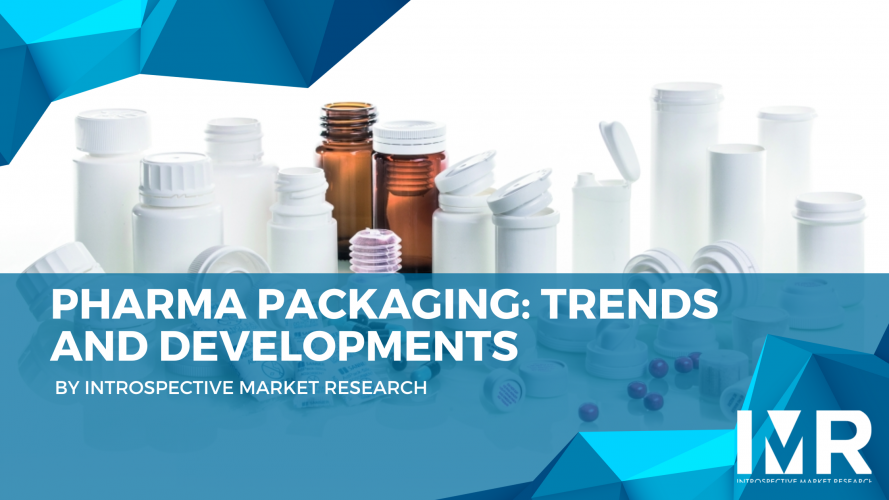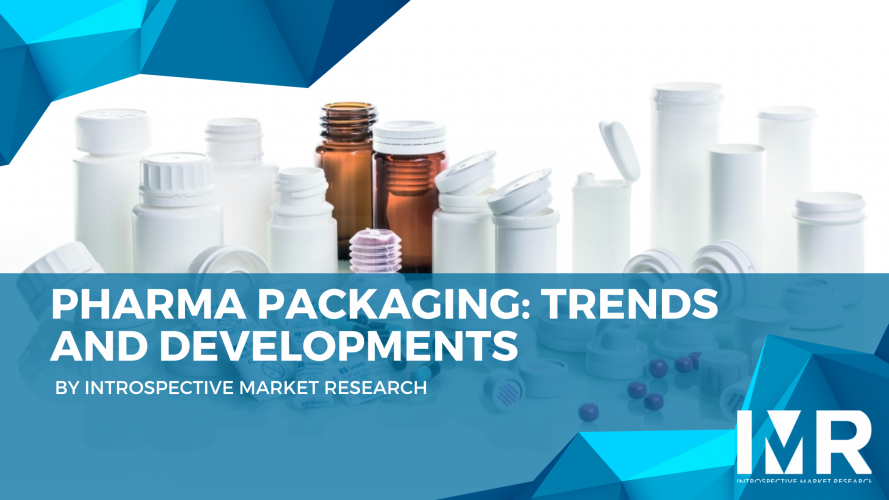
What Is Pharma Packaging?
The Pharma packaging industry was worth US$ 70 billion in the year 2020 and is expected to reach US$ 100 billion in 2026 with a CAGR of 6%. The most essential part manufacturing of drugs is their packaging. The packaging of drugs assures its protection during the storage, sale, and use. Containment, physical and chemical protection, portion control, and security of the drug are the prominent functions a packaging should provide. Packaging of drugs in pharmaceutical companies occurs in different levels- primary, secondary and tertiary.
Sales packaging is another term for primary packaging. Primary packaging is of great importance in pharmaceuticals as primary packaging is in direct contact with the drug, the material utilized for the manufacturing of primary packaging needs to be inert and shouldn't change the chemical composition of the drug. The different types of primary packaging are ampoules, vials, containers, strip package, blister packaging, syringe, sachet packaging, and dosing doppler.
The exterior packaging of the primary packaging is called secondary packaging. Secondary packaging is essential for various reasons, including physical and barrier protection, secondary containment, safety to the patient, and adherence to regulations. Secondary packaging consists of cartons, trays, and film bundles. Moreover, secondary packaging can be done in several forms, it will always contain a level of the packaging within it (primary packaging). In addition, the level of packaging a user will notice first is secondary packaging thus, it makes the appearance of secondary packaging very essential.
Tertiary packaging is involved in the transportation of medicines. Pharmaceutical industries that ship products utilize tertiary packaging in the distribution process. Generally, tertiary packaging is done to safeguard both the product and the packaging that sits beneath when being transported from one destination to another.
Trends In Pharma Packaging
Eco-Friendly Packaging
The world is evoking up the growing demand to go green. With individuals looking to live more environmentally friendly and reducing their usage of plastics, they're making more informed choices about the types of products they utilize. This trend is expected to continue along this path and could change the demand for certain types of products. PLA packaging (Polylactic Acid) is one of the vital solutions that could aid the pharma sector to decrease its emissions, as well as help manufacture a more sustainable product. It's combustible, can control the temperature of products during transportation, and also utilizes 65% less energy throughout production. Eco-friendly solutions are set to be a major priority for pharma with novel technologies developing all the time that will please users and benefit the environment too.
Using Nanotechnology To Clamp Down On Counterfeiting
The pharma industry is vulnerable to obstacles such as counterfeiting, which has become more effortless than ever attributed to the growing internet and online sales. Nanotechnology can enable nano barcodes to perform as a 'track and trace' system for tablets that will recognize where they've come from, preventing redistribution to other markets.
Packaging That's Efficient And Effective
The COVID-19 pandemic has ushered new awareness in the pharmaceutical industry to pack and distribute pharma products efficiently. There will be expectations to produce and dispense drugs rapidly, right down to the packaging. Packaging companies will encounter new challenges to develop solutions that will get things moving quickly and rise to the demand.
Bringing Smart Technology Into Packaging
Several types of smart technology such as Bluetooth, NFC, and QR codes can revamp areas of the pharmaceutical industry by helping to regulate stock and demand levels, while there could even be smart temperature tracking done by incorporating sensors that will help reduce the utilization of spoiled or unsafe products.
Accessible Packaging
Accessible product packaging is vital for many industrial verticals, but it's specifically important for the pharma industry. Individuals should be able to read and understand appropriate dosage and usage and should be one of the prominent considerations of packaging design. Moreover, the growing number of individuals adapting to self-medication (especially for conditions like diabetes and allergies), clear instructions, and highlighting of allergens, manufacturing, and expiration dates will be prominent. The information should be easy to read, and not just a list of ingredients, to help consumers, utilize their medication correctly and safely, and make sure they're disposing of it correctly too.
Startups Revolutionizing The Pharma Packaging Industry:
Calyx Containers
Calyx Containers, a US-headquartered startup manufactures packaging solutions for cannabis-infused products. The containers manufactured by Calyx Containers can be made transparent to improve product visibility and are rectangular. Moreover, they are resealable and are produced from recyclable materials, and are available in custom designs. In addition, the containers lock into the same tray irrespective of the volume, simplifying the inventory system. Therefore, this enables pharma companies to better connect with their customers and increase retention.
Blistr
Blistr is a UK-based startup company that provides blister packaging made up of seaweed and plant materials for the packaging of pharmaceutical products. The packaging solution is plastic-free, biodegradable, home-compostable, and ocean-friendly. Thus, allows pharma industries to eradicate plastic from their product offerings and adhere to sustainability goals. Moreover, it helps users to regulate the medical packaging waste in their households thus, reducing the plastic waste ending up in oceans.
V-shapes
V-Shapes, an Italian startup has developed single-portion packets for packaging of products from medical and pharmaceutical sectors. V-Shapes vacuum packaging solutions lengthen the product's shelf life and decrease volume. Moreover, V-Shapes packets are easy to utilize as the user can open and apply with the help of three fingers, offering efficient control on dosage. Thus, it helps in lowering the risk of soiling, spilling, and wasting the content. In addition, the packets are eco-friendly as the material utilized for the production of these packaging solutions is bio-based and homopolymers as raw materials.
Unipharm Healthy Manufacturing
New Zealand-based startup Unipharm Healthy Manufacturing provides contract pharmaceutical packaging solutions including labeling and distribution. The Unipharm Healthy Manufacturing company offers several services that include different final presentations such as bulk, bottles, tubes, blisters, and pots for all available solid and liquid dosage forms. Moreover, this service saves time and expenditure for small and medium pharma companies as the company readily offers the required machinery and personnel to package drugs.
Veneti
Veneti, a Poland headquartered company provides pharmaceutical-grade films. The organization utilizes several combinations of high-barrier PVC, polyvinylidene chloride (PVDC), and polyethylene (PE) to customize material properties. For instance, PVDC is brittle when solidified, but material manufactured by Veneti provides enhanced mechanical and insulation parameters including adequate flexibility. It also offers very low gas permeability and isolates products from the external environment, thus making it ideal for pharmaceutical packaging. Similarly, Veneti offers food-grade and generic packaging films.
Conclusion:
The COVID-19 pandemic has spurred the demand for quick manufacturing and distribution of vital drugs that are high in demand. The growing demand has also escalated the number of plastic debris generated after the consumption of medications. Moreover, the rise in the number of innovative solutions to reduce plastic waste is promoting pharmaceutical industries to adopt these latest packaging solutions and provide consumers with sustainable products. The sales of pharmaceutical products are increasing day by day attributed to the rise in the number of individuals suffering from diabetes, cardiovascular diseases, chronic kidney diseases, cancer, and many sudden outbreaks of flu. These advanced packaging solutions are expected to lower the production of plastic waste and help different economies to adhere to their net-zero emission goal. Furthermore, various antibodies and steroids are filled in glass bottles. Additionally, to ensure the safe transportation of these vials, the advancements in secondary and tertiary packaging have proved to be a boon to reduce the losses incurred due to the breakage during transportation. To summarize, pharma packaging solutions are evolving with the advancements in technologies to ensure the safety and viability of drugs thus, supporting the development in upcoming years.




